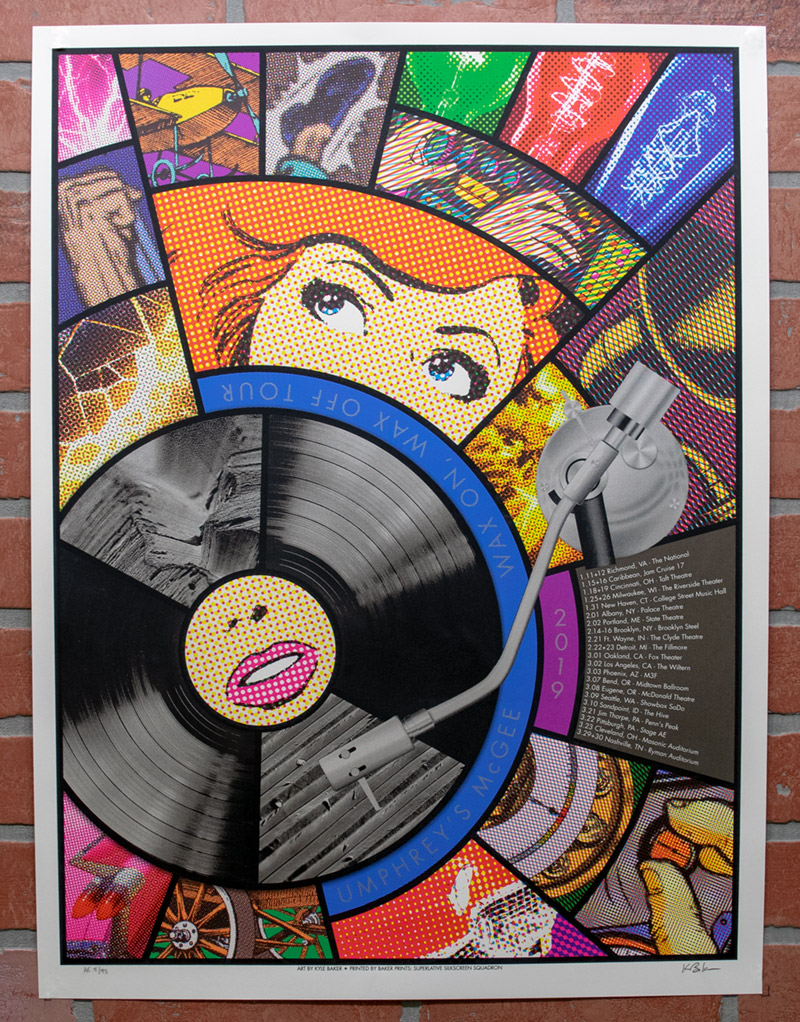
The main A/E is a limited edition of 93. This one is identical to the tour poster sold by the band during the tour except for the much smaller edition size and the ‘AE’ indicator next to the numbers.
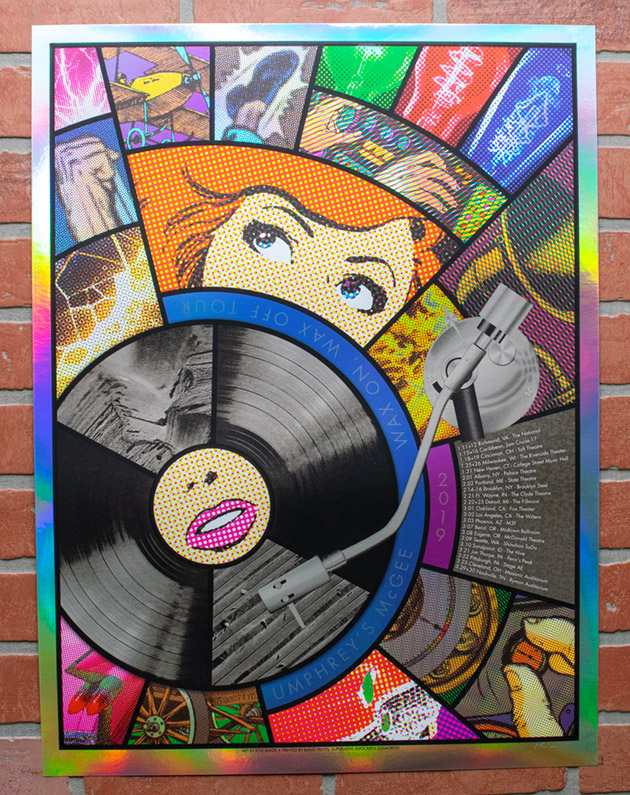
The foil variants are exclusively available from Baker Prints — none were sold on tour nor on the band’s website. The Rainbow Foil variant is a limited edition of 74.
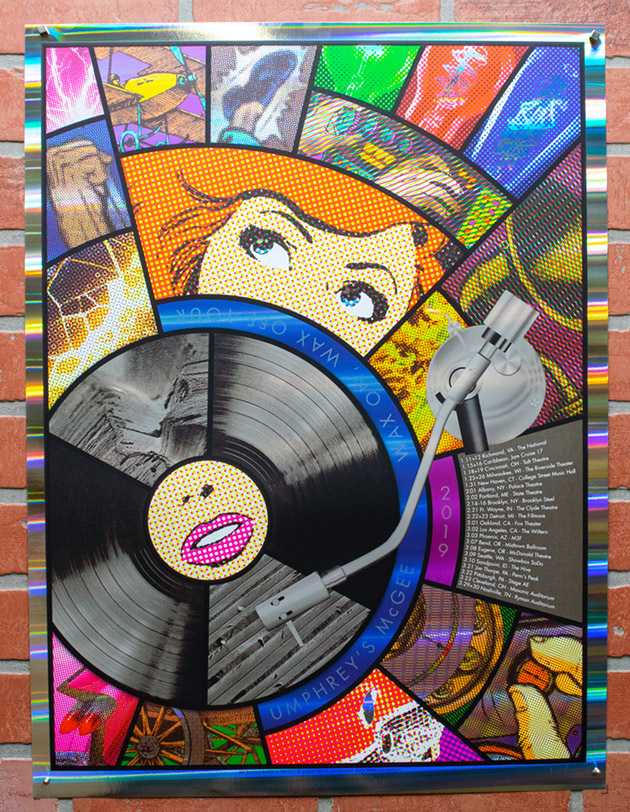
Pillars and Lava foil aren’t as photogenic as Rainbow but both of these turned out great. This is the Pillars Foil variant, a limited edition of 35.
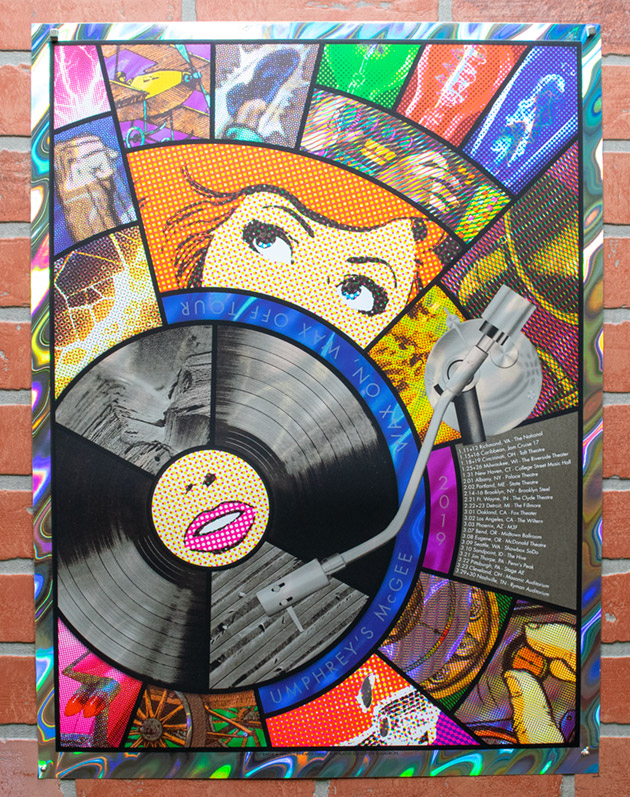
Here’s the Lava Foil variant, a limited edition of just 16. We added an extra white spot-screen to the separations before printing the rest of the colors on all of the foil variants, so that some parts of the art show-through to the foil while others have a white base. It’s a great effect we’ve used before.

Kyle has been reading all kinds of techno mumbo-jumbo about halftones lately. There are all different kinds in this poster—line, dot, elliptical, square, diamond—and they range in frequency from 3 to 80 LPI (lines-per-inch).
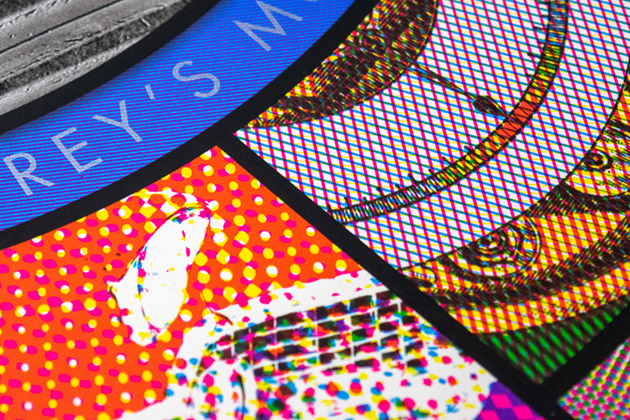
Balancing the halftone madness into a cohesive image was very challenging. The end result is a poster that’s fun to stare at (Kyle hopes anyway).

This above detail shot shows a fairly traditional approach to CMYK printing, but using a very low LPI to exaggerate the dot size and interaction. Might remind one of an old comic book… or an amateurish sheet of blotter acid (we wouldn’t know).

Tour posters can be tricky thematically because the best ones capture something quintessential about a band or tour. Whereas the best gig posters are often more focused and singular in subject matter.

This was a hybrid print run; the first five screens were printed with waterbased acrylic inks, and the last two were printed with UV-cure inks, to take advantage of each systems’ strengths. In the photo above you can see the extreme detail possible with UV-cure inks (they never dry in the screen and can be printed through very fine mesh counts—the record above was printed at 80 LPI using 380 threads-per-inch mesh).

Kyle experimented with different halftone angles as well, in some cases intentionally creating vibrating moiré and rosette patterns.
